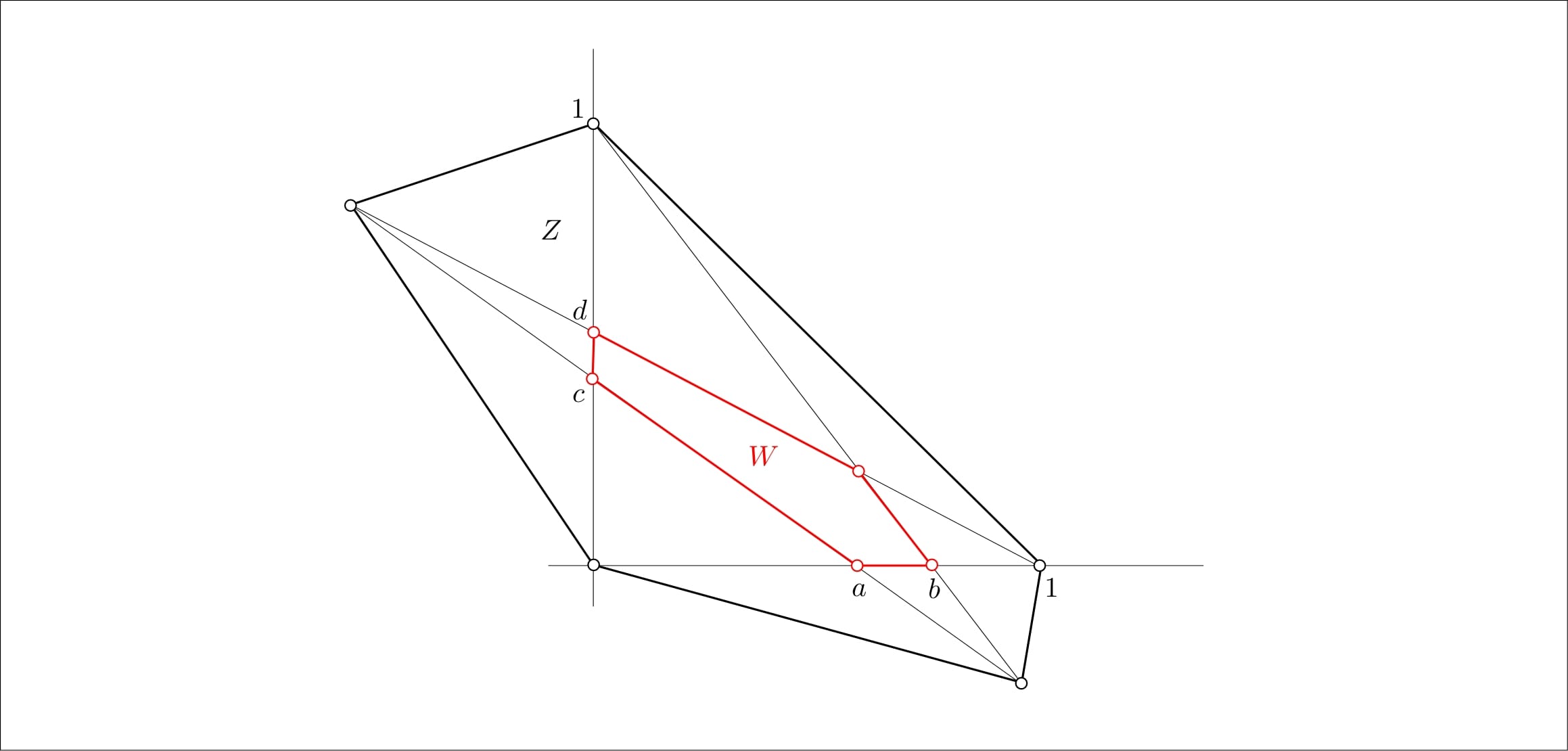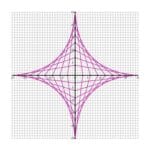Decoding the Convex Pentagon
Ever notice those five-sided shapes popping up everywhere, from home plate in baseball to the Pentagon building? These are convex pentagons, and they’re more prevalent than you might think. Let’s explore what defines a convex pentagon, their unique properties, and their real-world appearances. Whether you’re tackling geometry homework or simply curious, we’ll break down everything you need to know.
What is a Convex Pentagon?
A pentagon, at its simplest, is any five-sided, two-dimensional shape. A convex pentagon takes it a step further: Imagine stretching a rubber band around the pentagon. If the band touches all five corners without dipping into the shape itself, it’s convex. Alternatively, draw a line between any two points inside the shape. If that line always stays inside, you’re dealing with a convex pentagon. Furthermore, all interior angles of a convex pentagon measure less than 180 degrees.
Convex vs. Concave: The Pentagon Family Tree
Convex pentagons have a less well-behaved cousin: concave pentagons. These have at least one interior angle greater than 180 degrees, creating an inward “dent.” Think of a star shape – many stars are concave pentagons! This inward-pointing angle is the key differentiator between the two.
Pentagon Properties and Quirks
Several key features define convex pentagons:
- Interior Angles: Each angle measures less than 180 degrees, and their sum always totals 540 degrees. This holds true for all convex pentagons.
- The “Inside” Rule: A line drawn between any two points within a convex pentagon (or on its edges) remains entirely within the shape.
- Diagonals: Connecting non-adjacent corners creates diagonals. A convex pentagon has five diagonals crisscrossing its interior.
Pentagons in the Real World
Convex pentagons aren’t just theoretical; they’re surprisingly common. The Pentagon building is an obvious example (composed of regular pentagons), but you might also find them in crystal cross-sections, road signs, and even the arrangement of petals in some flowers. Keep your eyes peeled – you might be surprised where they appear! Unleash your inner artist and mathematician with this captivating coordinate graphing mystery picture.
Area and Perimeter: Measuring the Pentagon
Calculating the area of a convex pentagon can be tricky, especially if it’s irregular (unequal sides and angles). One method involves dividing it into triangles and summing their areas, much like assembling a puzzle. For regular convex pentagons (equal sides and angles), the formula simplifies to Area = (5/4) * s² * cot(π/5), where ‘s’ is the side length.
Finding the perimeter is straightforward: sum the lengths of all five sides. For a regular convex pentagon, it’s simply 5 * s.
| Feature | Regular Convex Pentagon | Irregular Convex Pentagon |
|---|---|---|
| Sides | Equal lengths | Varying lengths |
| Angles | Equal measures | Varying measures |
| Area | (5/4) * s² * cot(π/5) | Sum of triangle areas |
| Perimeter | 5 * s | Sum of side lengths |
Deeper Dive: Pentagon Puzzles
Pentagons offer avenues for further exploration. Some researchers suggest a link between convex pentagons and the golden ratio, a number appearing in art, architecture, and nature. Others are exploring their role in computer graphics and tessellations (gapless patterns). The world of pentagons holds many intriguing secrets waiting to be uncovered.
What are Convex Pentagons?
Let’s delve deeper into the nuances of convex pentagons.
Key Takeaways:
- Convex: Five-sided shapes with all interior angles less than 180°, vertices pointing outwards.
- Concave: At least one interior angle exceeds 180°, creating an inward “dent.”
- Regular vs. Irregular: Can have equal sides and angles (regular) or varying ones (irregular).
- Interior Angles: Always sum to 540°. Each angle in a regular pentagon measures 108°.
- Tiling: Fifteen unique convex pentagon types can perfectly cover a flat surface, with applications in various fields.
Defining Convexity
Imagine drawing a five-sided shape. If any line connecting two points inside stays within the shape, it’s likely convex. This “staying inside” property arises from outward-pointing vertices.
Convex vs. Concave: A Tale of Two Shapes
The crucial difference lies in the interior angles. In convex pentagons, each is less than 180°. Concave pentagons have at least one angle greater than 180°, creating an inward “cave.”
Regular and Irregular Convex Pentagons
While the image of a regular pentagon (equal sides and angles) might come to mind first, convex pentagons can be irregular, with varying side lengths and angles, as long as all interior angles remain below 180°.
The Intrigue of Pentagonal Tilings
Fifteen specific types of convex pentagons can perfectly tile a plane–a discovery with real-world implications in architecture, materials science (quasicrystals), and art. Ongoing research continually explores the potential of these geometric patterns.
Convex Pentagons in Everyday Life
Convex pentagons appear in our surroundings, from the (regular) pentagons forming the Pentagon building to the natural structures of certain flowers, crystal facets, and even traffic signs.
| Feature | Convex Pentagon | Concave Pentagon |
|---|---|---|
| Interior Angles | All less than 180° | At least one angle greater than 180° |
| Shape | No inward “dents” | Has at least one inward “dent” |
| Sides | Can be equal (regular) or unequal | Can be equal or unequal |
While much is known about convex pentagons, research continues. For example, aperiodic tilings using convex pentagons remain an active area of study, with potential applications in materials science. It’s possible that more than fifteen types can tile a plane, a question researchers are still exploring.
What is a Convex Polygon?
Expanding beyond pentagons, let’s consider the broader category of convex polygons. A convex polygon is a flat, closed shape with straight sides where all interior angles are less than or equal to 180 degrees and any line segment connecting two points inside stays entirely within the polygon.
Defining Convex Polygons
Visualize drawing a shape with straight lines, never “denting” inwards. Like a taut rubber band, a convex polygon always pushes outwards. The “line test” – any line between two interior points staying within the polygon – is a helpful way to visualize this.
Why are Convex Polygons Special?
Convex polygons possess properties useful in various fields. All diagonals (lines connecting non-adjacent vertices) remain inside the shape. They also reside entirely within a “half-plane” created by extending any edge. Contrast this with concave polygons, which have at least one inward “dent” and an interior angle exceeding 180 degrees.
Examples of Convex Polygons
Regular polygons (like squares, hexagons) are always convex. Irregular polygons, with unequal sides and angles, can also be convex as long as they meet the “no dents” rule.
Convex Polygons in Action
Convex polygons are fundamental in fields like computer graphics (3D modeling), computational geometry (geometric problem-solving algorithms), and even optimization and resource allocation.
Ongoing Research
While much is understood about convex polygons, research continues, exploring more complex polygons and their applications in fields like robotics and artificial intelligence. Deeper understanding could lead to breakthroughs in areas like path planning and object recognition.
How Many Degrees in a Convex Pentagon?
Let’s explore the angles of convex pentagons. A convex pentagon’s interior angles always sum to 540 degrees. In a regular convex pentagon (equal sides and angles), each interior angle measures 108 degrees (540° / 5). Even in irregular convex pentagons, where individual angles may vary, the total remains 540 degrees.
Convex vs. Concave: An Angle Apart
The distinction lies in the interior angles. In convex pentagons, each angle is less than 180 degrees, ensuring all vertices point outwards. Concave pentagons have at least one angle greater than 180 degrees, creating an inward “cave.”
Exterior Angles: A Consistent Sum
The exterior angles of any convex polygon, including pentagons, always add up to 360 degrees. For a regular pentagon, each exterior angle measures 72 degrees.
Why 540 Degrees? The Triangle Connection
The sum of interior angles in a pentagon is 540 degrees because it can be divided into three triangles. Since each triangle’s interior angles sum to 180 degrees, three triangles times 180 degrees equals 540 degrees.
Real-World Pentagon Sightings
Pentagons appear in unexpected places—the Pentagon building, crystal structures, the cross-sections of some fruits, and even home plate in baseball.
Ongoing Geometry Research
While properties like the sum of interior angles are well-established, research continues to explore complex polygons and their relationships with other geometric shapes, suggesting there’s still more to discover about these seemingly simple figures.
- Unveiling the Enigma: Mansoureh Khojasteh Bagherzadeh’s Public Appearances & Private Life in Iran - July 18, 2025
- Unveiling the Mystery: Mansoureh Khojasteh Bagherzadeh’s Husband: A Rare Glimpse into a Private Life - July 18, 2025
- Unveiling Masoud Khamenei’s Mother: Power, Influence, and Iran’s Future - July 18, 2025

















1 thought on “Understanding Convex Pentagons: Properties, Examples, and Applications”
Comments are closed.